This article was co-authored by Vote.org and by wikiHow staff writer, Hunter Rising. Vote.org is a 501(c)(3) nonprofit that uses technology to simplify political engagement, increase voter turnout, and strengthen American democracy. In particular, it aims to reach underserved voters, and has established itself as one of the most trusted and acessible online resources for registering to vote and understanding how to cast your ballot.
This article has been viewed 49,260 times.
Voting in a state or federal election allows your voice to be heard and lets you select the candidates that you support the most. If you’re a United States citizen, meet your state's eligibility requirements, and are at least 18, you can register to vote in your state. While everyone can register by mail or in person, you may be able to register online if you live in one of the 40 states that allow it. Some states require you to register 30 days before Election Day, so make sure you meet the deadline!
Warning: Many states are changing their voting and election rules in response to COVID-19. To see if your state's rules have changed, visit: https://www.vote.org/covid-19/.
Steps
Checking Your State’s Registration Laws
-
1Check your State Election Office website to see if you can register online. As of September 2020, 40 states allow you to register to vote online. Find your State Election Office at https://www.usvotefoundation.org/vote/eoddomestic.htm or go to https://www.vote.org/ to see the rules for your state. If your state does not offer online registration, you will have to register in person or by mail before you’re able to vote.[1]
- You can find a list of the states that have online registration here: https://www.ncsl.org/research/elections-and-campaigns/electronic-or-online-voter-registration.aspx.
- The states that do not allow online registration are Arkansas, Maine, Mississippi, Montana, New Hampshire, North Carolina, North Dakota, South Dakota, Texas, and Wyoming, plus the District of Columbia.
Tip: Some states automatically register you to vote when you receive your driver’s license or state ID. You can also check your registration status on your State Election Office website. Currently, North Dakota is the only state that does not require voters to register.
-
2Confirm that you're eligible to vote in your state. In all states, you must be a U.S. citizen, at least 18 years old by Election Day, and meet your state's residency requirements. Find specific information for your state at https://www.vote.org/voter-registration-rules/.[2]
- If you are under the age of 18, you may be able to pre-register to vote if your state allows it. If you aren't yet 18 and your state does not have pre-registration, sign up at https://www.vote.org/pledge-to-register to receive a text reminder on your 18th birthday and a link to register to vote.
- Some states have additional requirements. For instance, you may not be eligible to vote if you've been convicted of a felony or committed by the sate. If you have a felony conviction, you can learn more about your voting rights at https://campaignlegal.org/restoreyourvote.
Advertisement -
3Submit your application before your state’s deadline for the next election. Some states require you to register as early as 1 month in advance of the election, so make sure you meet the deadline. Visit your State Election Office website or https://www.vote.org/voter-registration-deadlines/ to find state-specific information.[3]
- Many states now allow you to register on Election Day, so even if you miss the deadline you may still be able to register and cast a ballot on Election Day or during early voting.
Tip: Check to see if you are already registered to vote in your state and make sure all of your information is up to date.
Filling out the Registration Form
-
1Visit your State Election Office website to find the electronic form. If your state offers online voter registration, you can find a link to your State Election Office website here: https://www.ncsl.org/research/elections-and-campaigns/electronic-or-online-voter-registration.aspx#Table%20of%20states%20w/ovr. Follow the instructions to complete the form.[4]
- If you’ve changed your name, moved to a new address, or want to change your party affiliation, you may be able to change your current registration record or request an absentee ballot through your State Election Office website. Check your state’s site for specific instructions.
Tip: You can register directly through your state or through https://vote.gov/ or https://www.vote.org/register-to-vote/.
-
2Fill in your personal information in the appropriate boxes. Provide your full name, home address, and date of birth, and make sure you spell everything correctly. If you have a different mailing address, be sure to list it so you can receive any important voting information. The form may also ask you for an email address and phone number.[5]
- Look over the form for any boxes marked with asterisks (*) since that usually means they are required fields.
-
3Provide a state-issued ID to confirm your identity. Your state may require a valid state-issued ID, Social Security Number, or other identification documents to verify who you are. Enter your state-issued driver’s license or identification number, if you have it, double-checking to make sure there aren’t any errors.[6]
- The state government will check the information on your registration form compared to the records at the Department of Motor Vehicles (DMV) to ensure they match.
- Some states allow online registration for potential voters who do not have a state-issued ID number.
- You do not need to provide an ID number or SSN in order to register to vote, if you do not have one. All states are required to accept the federal form to allow someone to register in federal elections, and with the federal form this is requested but not required.
- You do not have to upload or make copies of your ID.
Tip: If you are a first-time voter or live in a state that requires you to show an ID in order to vote, you may need to bring additional identification to vote. Check your state’s Voter ID requirements at https://www.vote.org/voter-id-laws/.
-
4Select your political party preference if your state requires it. Look for a Party Preference section on the electronic form and read the instructions to figure out if you need to select one for your state. Select the party you affiliate with most, or if your state allows it and you would like to skip this step, choose the “No Party” option before moving on.[7]
- Some parties you can select may include Republican, Democratic, Libertarian, or Independent.
- Some states will not let you vote in primaries, caucuses, or conventions if you don’t select a political party.
-
5Click the appropriate button to submit your information and registration. Read over your information to confirm you spelled everything correctly and that it’s accurate. If you notice any mistakes, click on the Edit button and make your corrections, if applicable. Submit your application when you’re finished to send the form to the Secretary of State’s office where they’ll review your info.[8]
- Typically, you will receive an email or letter regarding your registration within a few weeks.
-
6Check your registration status on your State Election Office website. Your state will review your form before accepting it, so submitting an online registration form does not automatically register you to vote. It may take a few days for your registration to be accepted. Visit your State Election Office site and follow the instructions to check your registration status. They may ask for your name, date of birth, ID number, or other identifying information to confirm your status.[9]
- You can also check your registration status at https://verify.vote.org/.
- Your state may send you a voter registration card in the mail to confirm your registration was processed.
- If there is an issue with your online voter registration or your information cannot be verified, you may be contacted by your State Election Office for more information.
Warnings
- In response to COVID-19, many states are changing their voting and election rules. To see if your state rules have changed, visit https://www.vote.org/covid-19/.⧼thumbs_response⧽
- You cannot fill out ballots or cast votes online. You will still need to visit a polling location or request a mail-in ballot.[11]⧼thumbs_response⧽
- If your state doesn’t have online registration or you missed the deadline, you either need to register by mail or in person.[12]⧼thumbs_response⧽
References
- ↑ https://www.ncsl.org/research/elections-and-campaigns/electronic-or-online-voter-registration.aspx
- ↑ https://www.usa.gov/voter-registration-age-requirements
- ↑ https://www.usvotefoundation.org/vote/state-elections/state-election-dates-deadlines.htm
- ↑ https://www.ncsl.org/research/elections-and-campaigns/electronic-or-online-voter-registration.aspx
- ↑ https://www.usa.gov/register-to-vote
- ↑ https://www.eac.gov/sites/default/files/eac_assets/1/6/Federal_Voter_Registration_ENG.pdf
- ↑ https://www.ncsl.org/research/elections-and-campaigns/electronic-or-online-voter-registration.aspx
- ↑ https://www.ncsl.org/research/elections-and-campaigns/electronic-or-online-voter-registration.aspx
- ↑ https://www.ncsl.org/research/elections-and-campaigns/electronic-or-online-voter-registration.aspx
About This Article
Most people in the United States can register to vote online. Currently, 39 states and the District of Columbia allow citizens to register online. Check your State Election Office Website to confirm that your state allows you to do so. Whether you’re registering online, in-person or by mail, you’ll still need to meet the same basic requirements. You must be a U.S. citizen, and at least 18 years old by election day. If you are under the age of 18, you may be able to pre-register to vote if allowed by your state’s laws. If you are a first-time voter, you will need to provide proof of identity when registering, such as a driver’s license or state ID. You may also need to provide additional proof of residence such as a current utility bill, or bank statement. Also, note that there may be additional eligibility requirements for your state. For example, according to Vote.org, some states may not allow those with former felony convictions to vote. You can learn more about your state's requirements by visiting your State Election Office website. When you’re ready to register online, visit your State Election Office website and fill out the electronic form. You will be prompted to enter your driver’s license number, state ID card number, or your social security number. Once your application is submitted, you’ll be added to your state’s voter registration list. Print or save any confirmation information, and check that all the details are correct. Be sure to register to vote before your state’s deadline if you plan on voting in an upcoming election. Once you’re registered, you can update or view your registration status using your State Election Office website.

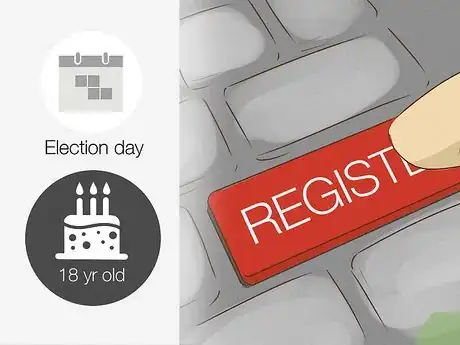
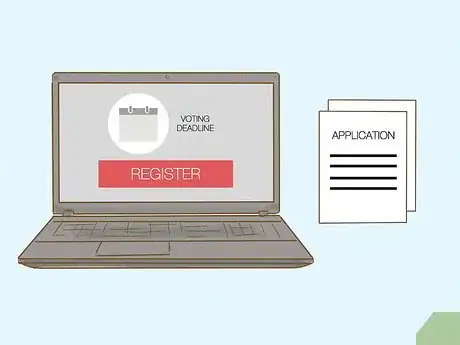
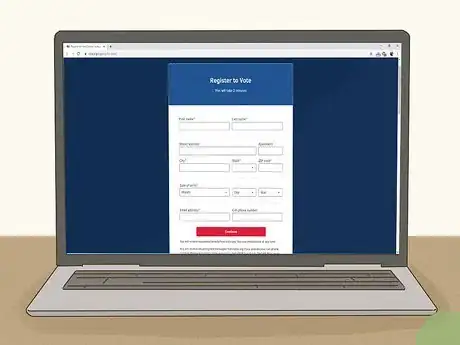
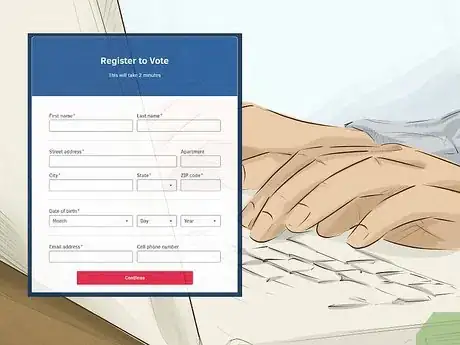
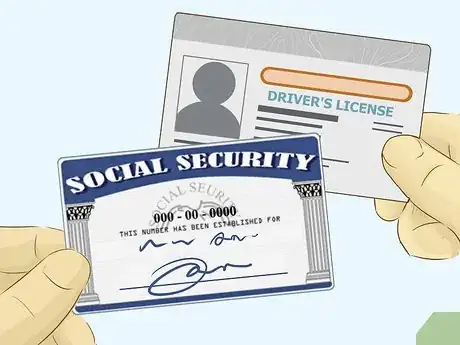


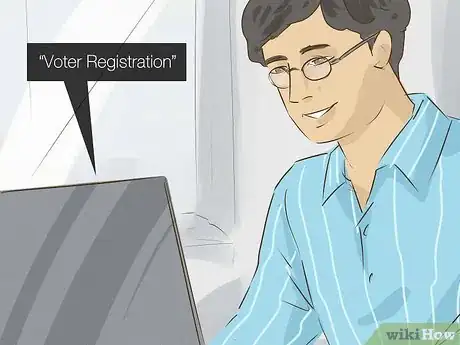






(3)-Status-of-a-Nonprofit-Step-1.webp)

















































